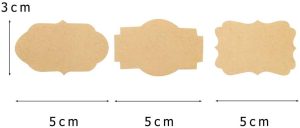The evolution of barcode labels spans several decades, with advancements in technology and business practices leading to the development of various types of barcodes and their integration into numerous industries. Here’s an overview of the key stages in the evolution of barcode labels:
- Early Concepts (1940s-1960s): The idea of using patterns of lines and spaces to represent data dates back to the 1940s. However, the technology to implement and read such codes was limited at the time. The concept gained traction in the 1960s as researchers explored ways to automate data collection in various fields.
- Universal Product Code (UPC) Emergence (1970s): The breakthrough moment came with the development of the Universal Product Code (UPC) by George Laurer and his team at IBM in the early 1970s. The first product ever to be scanned with a UPC barcode was a pack of Wrigley’s chewing gum in 1974. This marked the beginning of the barcode revolution in the retail industry.
- Standardization and Adoption (1980s-1990s): During the 1980s and 1990s, barcode standards became more established. Various industries adopted barcodes for inventory management, tracking, and sales. The Barcode 39 (Code 39) standard was developed, allowing alphanumeric characters to be encoded.
- Diverse Barcode Types (1990s-Present): As technology advanced, new types of barcodes were introduced to accommodate different needs. The QR Code (Quick Response Code) was invented in 1994 by Denso Wave, a subsidiary of Toyota. Unlike traditional barcodes, QR Codes could store more information, including URLs, contact information, and more, which led to their widespread use for marketing and information sharing.
- Global Data Synchronization (2000s-Present): The 2000s saw efforts to enhance data synchronization across the supply chain using barcodes. Systems like the Global Data Synchronization Network (GDSN) were established to ensure accurate and consistent product information across retailers, manufacturers, and distributors.
- Mobile Technology Integration (2010s-Present): The rise of smartphones with built-in cameras opened up new possibilities for barcode scanning. Mobile apps emerged that allowed users to scan barcodes using their phones, enabling easy access to product information, price comparisons, and more.
- 2D Barcodes and Data Capacity (2010s-Present): Two-dimensional (2D) barcodes like QR Codes and Data Matrix gained popularity due to their ability to store significantly more information than traditional linear barcodes. This made them valuable for applications beyond retail, such as ticketing, logistics, and healthcare.
- IoT and RFID Integration (2010s-Present): Barcodes have integrated with the Internet of Things (IoT) and Radio Frequency Identification (RFID) technology. RFID allows for wireless data transmission and remote identification, complementing barcode systems in various industries.
- Sustainability and Dynamic Barcodes (Present and Beyond): The focus on sustainability has led to innovations in eco-friendly barcode label materials. Additionally, dynamic barcodes that can be updated remotely with new information are gaining attention for their flexibility and adaptability.
- AI and Computer Vision (Present and Beyond): Advancements in artificial intelligence and computer vision are enabling even more sophisticated barcode scanning capabilities. AI-powered systems can decipher damaged or partially obscured barcodes, enhancing accuracy and reliability.
In summary, the evolution of barcode labels has been characterized by the development of various barcode types, the integration of technology like smartphones and IoT, and a constant drive to improve efficiency and accuracy across industries. The future holds potential for further innovations as technology continues to evolve and new use cases for barcodes emerge.

